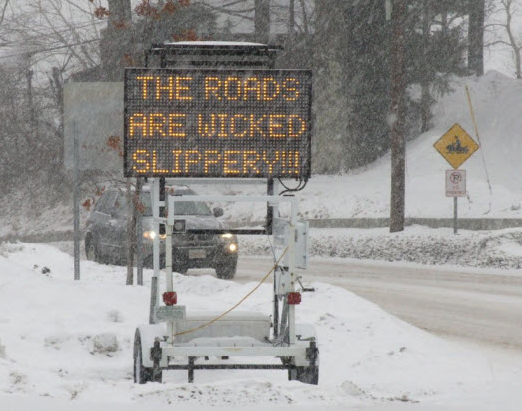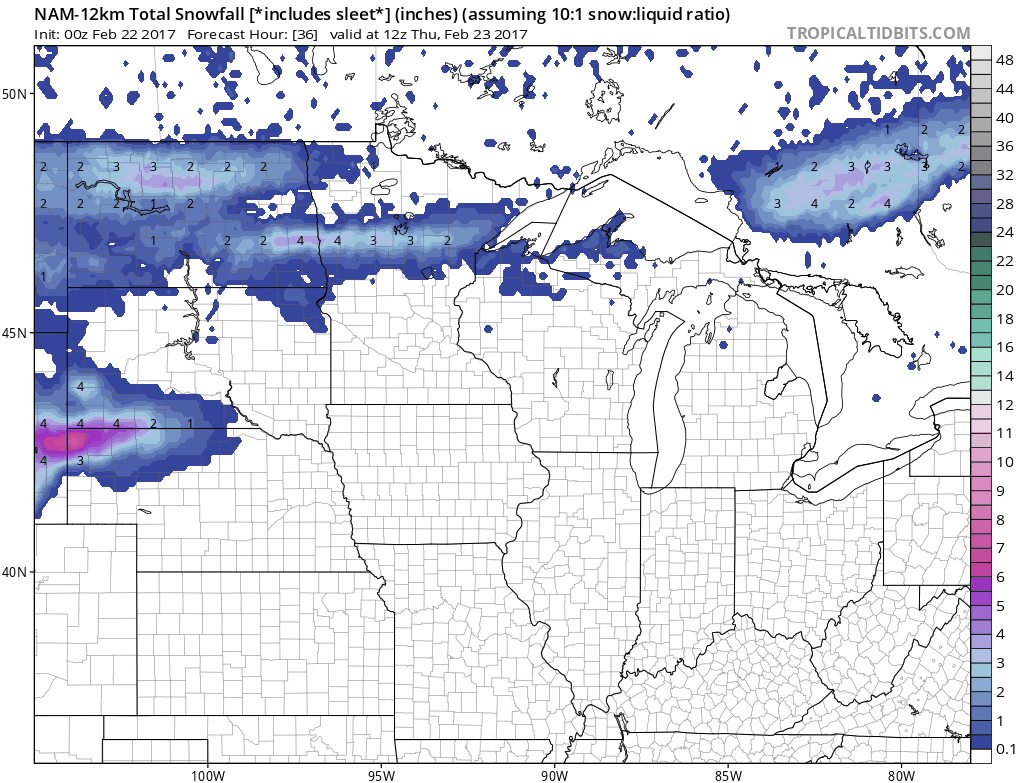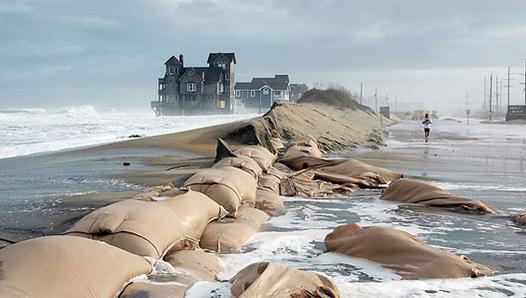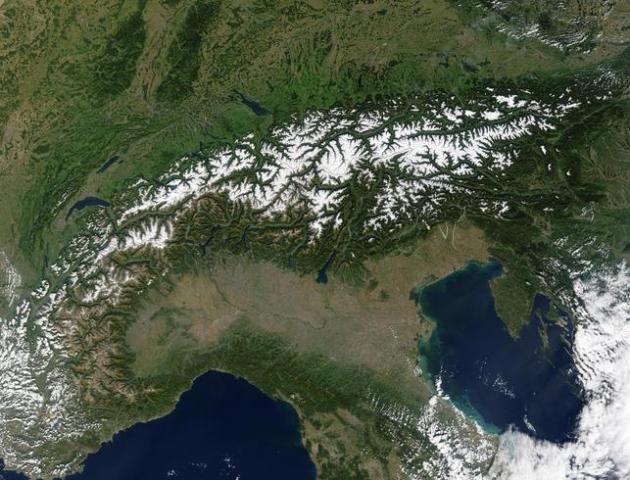62 F. record high in the Twin Cities Tuesday. Old record was 59 in 1930)
31 F. average high on February 21.
37 F. high in the metro area on February 21, 2016.
February 22, 1922: A blizzard, ice storm and thunderstorms all occur on the same day across Minnesota. Winds hit 50 mph in Duluth while thunderstorms were reported in the Twin Cities. Heavy ice over southeast Minnesota with 2 inches of ice on wires near Winona. Over two inches of precipitation fell. This was also one of the largest ice storms ever in Wisconsin history.
From Fake Spring to Real Blizzard in 36 Hours?
This week feels like a Meteorology 001 final exam: rain, thunder, fog, record warmth, blizzard potential. Wait, say what? You heard right. There’s a small but growing risk of an old fashioned snowy dumping by Friday. Although, as a recovering snow-lover, I keep asking “what can go wrong, and what time?”
Will planets align – or is this another cruel false alarm for snow aficionados? Confidence levels remain low; a slight wobble in the storm track of only 50-75 miles will make the difference between 3 inches and 13 inches. Right now it appears the best chance of 6-10 inches or more will come north and west of the Twin Cities but more tweaks in the snowfall outlook are likely as we zero in on the final storm track. Friday looks like the roughest travel day – and the lowest mile of the atmosphere should be cold enough for all-snow north and west of MSP; mostly-snow in the immediate Twin Cities.
Buyer beware: if the storm track shifts your results may vary. Either way it’s a subtle (yet blunt) reminder that, no, spring is NOT here.
Record warmth, 60s in February – this nice little daydream we’ve enjoyed together, will soon give way to reality. March kicks off with highs in the 30s, where we should be.
Winter Storm Watch. I haven’t seen wording like this from the local National Weather Service office in a long time. On our (patented, trademarked, Judge Judy-certified) snowstorm scale from nuisance to plowable to crippling this will probably fall somewhere between plowable and crippling.
Record Territory Again Wednesday. Today’s all-time record in the Twin Cities is 57F in 1930. We’ll come very close. The local National Weather Service office has more details. Tuesday’s high hit a record 62F in the Twin Cities; that’s average for April 23.

A Real Snowstorm? I know. I know. The drumbeat of media hype is getting louder and snow lovers are understandably skeptical. It doesn’t snow here anymore! We always find a way to get cheated. “Take the predicted snowfall amounts and divide by two – that’ll be closer to reality!” Perhaps. Model trends suggest that significant snow is increasingly likely, and this storm may fall between plowable and crippling. Where the zone of “crippling” snow (1-2 feet + winds stirring up near-blizzard conditions Thursday night into Friday morning) is still unclear, but there’s little doubt that Friday commutes will be disrupted. You just new that after a run of 60s in mid-February the weather would turn on us. You could have scripted this.
Blizzard Potential Friday? Our internal BPI (Blizzard Potential Index) shows moderate to high values pushing across southern Minnesota into western Wisconsin on Friday. You can see a slight shift in Tuesday’s NAM model runs. Source: AerisWeather.

Shifting Track. Latest (NAM) guidance shifts the heaviest snow band north and west of the Twin Cities. A more northward storm track might pull a brief mix of snow, sleet and freezing rain as far north as the Twin Cities Thursday night, taking the edge off the heaviest amounts in the immediate metro – with all snow just north/west of MSP. A 50 mile jiggle in the storm track will mean the difference between 4-5″ of slush and a cool foot of snow. Future snowfall product (12 KM NAM) from NOAA and Tropicaltidbits.com.
What Can Possibly Go Wrong? I have to keep asking that question, because the vast majority of the time we seem to miss out on the heaviest snow band. There’s always an excuse. “It went north, it went south, no – it went west!” Oh, the indignity. My excitement level is ratcheting up with every new model run. Odds favor a plowable snowfall, even in the immediate metro. A foot? I wouldn’t rule it out but if you like snow it’s still a little early for joyous celebration. Predicted model amounts above: Iowa State.
Snowiest Place in New York has 25 Feet and Counting. MSN.com documents the snowy wonderland of Oswego County, New York – ground zero for lake effect snow squalls: “For most in upstate New York, a foot of snow is an intimidation. For Carol Yerdon, it’s a milestone. By Sunday morning, more than 24 feet of snow already had fallen this winter in the corner of Oswego County where Yerdon lives. Then it began to snow again. A foot or more was in the forecast. By noon Sunday, enough fresh snow was on the ground for Yerdon to hit her mark. “Yes we did it! We hit 300 inches,” Yerdon said. “Just 125 inches to go to break the record!…”
Photo credit: Kevin Rivoli/AP Photo. “Steve Meier, right, and John Bellavia dig out Bellavia’s car in Osewgo, N.Y., Friday, Feb. 9, 2007. New York’s Governor Eliot Spitzer declared a disaster in Oswego County, where five straight days of lake-effect squalls have dumped nearly 100 inches (254cm) of snow, with even more snow forecast through the weekend.”
The Weather Honeymoon Is Nearly Over. It sure was nice while it lasted, unless you make a living from cold and snow, in which case it’s been miserable. Your time will come. After one more day of near-record warmth today we cool off Thursday and Friday. Expect highs mostly in the 30s next week. Above zero. Most of us can live with that. ECMWF numbers: WeatherBell.
A Spring Fever-Less Start to March. A return to more seasonable temperatures is imminent from the northern Rockies and Upper Midwest into New England; relative warmth lingering over the southern USA for the next few weeks. Expect more wintry relapses in the coming weeks; I suspect winter isn’t nearly done with us yet.
Wet Winter Has Improved Colorado River Basin’s Water Forecast, But The Drought Endures. Here’s an update from The Los Angeles Times: “…Yet there is one place where the precipitation has been particularly welcome and could be transformative: the Colorado River basin, which provides water to nearly 40 million people across seven states. “We’re in a really good spot as far as snow accumulations,” said Malcolm Wilson, who leads the Bureau of Reclamation’s water resources group in the upper Colorado River basin. In fact, if the Rocky Mountains continue to see substantial snowfall this winter, there is a chance that later this year, water managers for the Colorado could do something that seemed inconceivable just a few weeks ago: They could start giving water away...”
Photo credit: “Lake Mead reservoir and the Hoover Dam show a “bath tub ring” from low water levels in 2015.” (Irfan Khan / Los Angeles Times)
California Braces For More Rain. How Bad Can It Get? Here’s an excerpt from a story at The New York Times: “…This latest storm is what’s called an “atmospheric river” — a weather event more commonly known as the “pineapple express.” It is moist tropical air from the central Pacific trapped in a band between different pressure systems, Mr. Kurth said. When it hits California, it unleashes a high amount of rain. “It’s like a fire hose of moisture when we get these atmospheric rivers,” he said. An atmospheric river is not especially unusual. “We usually get a couple every year,” he said. “On average we get maybe three to five or so. This year we’ve gotten quite a few more.” How many more? “More than a dozen prior to this one,” he said…”
Photo credit: “Flood water crossed over Interstate 5 in Williams, Calif., about 60 miles north of Sacramento on Saturday.” Credit Randy Pench/The Sacramento Bee, via Associated Press.

Atmospheric Rivers Bring High Winds Too. Some surprising new research highlighted at NPR: “…Waliser studied two decades of storms around the globe at mid-latitudes — that is, outside the tropics. When he focused on the very windiest — the top 2 percent — he found that “atmospheric rivers are typically associated with 30 and even up to 50 percent of those very extreme cases.” Atmospheric rivers were also responsible for almost that percentage of the very wettest storms, too. But the windiness was surprising. Waliser found that winds during an atmospheric river are typically twice the speed of the average storm. He says emergency responders need to know that. “Not only do [atmospheric rivers] come with this potential for flooding hazards,” he says, “they also come with potential for high impact winds and extremes that can produce hazardous conditions…”
Animation credit: NOAA/ESRL/PSD.
The Central Valley experiences flooding 300 miles long and 20 or more miles wide.Serious flooding also occurs in Orange County, Los Angeles County, San Diego, and the San Francisco Bay Area. Wind speeds reach 125 miles per hour. […] Hundreds of landslides damage roads, highways, and homes. Property damage exceeds $300 billion, most from flooding.[…] Agricultural losses and other costs to repair lifelines, dewater (drain) flooded islands, and repair damage from landslides, brings the total direct property loss to nearly $400 billion. Flooding evacuation could involve 1.5 million residents.
Fine, Water Doesn’t Scare You? How About $10,000? The Weather Social calls attention to the people who believe their vehicle can somehow magically transform into a boat and get them safely to the other side of a flooded road. Here’s an excerpt: “…In all seriousness, you need to get to work and you need to earn your pay. But if it’s really about collecting a paycheck, realize that driving across a flooded road could set you back way more than a day or week of pay. According to cartalk.com, once water reaches the doors and the engine stalls, your wallet is going to open up like a floodgate. Expect damage to carpets, floor mats, door panels and the trunk liner. Seats and any motion mechanics or sensors will need to be replaced. Water will get into the gas tank as well and thus need drained. The brakes will need to be replaced. Finally, the biggest issues will come from engine damage. Water in the cylinders and transmission will need to be drained. Especially when nobody is hurt, we regularly dismiss pictures of stalled vehicles and say, “not me.” Especially when we’ve driven it before, we regularly look at a flooded street and say, “I can make it…”

Coastal Cities Could Flood 3 Times a Week by 2045. Here’s an excerpt from Climate Central: “…Washington and Annapolis, Md. could see more than 120 high tide floods every year by 2045, or one flood every three days, according to the study, published last week in the journal PLOS ONE. That’s up from once-a-month flooding in mid-Atlantic regions now, which blocks roads and damages homes. “The flooding would generally cluster around the new and full moons,” said Erika Spanger-Siegfried, a Union of Concerned Scientists analysts who helped produce the new study. “Many tide cycles in a row would bring flooding, this would peter out, and would then be followed by a string of tides without flooding.” The analysis echoed findings from previous studies, though it stood out in part because of its focus on impacts that are expected within a generation — instead of, say, by the end of the century...”
File photo: Andrew Demp, Yale.
Number of Minnesota Farms Dips by 300 to 73,300 in 2016. So reports the Crookston Times: “Minnesota has slightly fewer farms than a year ago but the ones that remain tend to be getting larger, following national trends. A U.S. Department of Agriculture report released Friday says the total number of farms in Minnesota in 2016 was 73,300. That’s down 300 from 2015. The total amount of Minnesota farmland last year was 25.9 million acres, which hasn’t changed since 2013…”
File photo: meteorologist Rob Koch.
The Age of the Giant Battery Is Almost Upon Us. So says Bloomberg: “The idea that giant batteries may someday revolutionize electrical grids has long enthralled clean-power advocates and environmentalists. Now it’s attracting bankers with the money to make it happen. Lenders including Investec Plc, Mitsubishi UFJ Financial Group Inc. and Prudential Financial Inc. are looking to finance large-scale energy-storage projects from California to Germany, marking a coming-of-age moment for the fledgling industry. The systems help utilities solve a longstanding clean-power conundrum: managing the unpredictable output from wind and solar farms, and retaining electricity until it’s needed. Battery costs have declined 40 percent since 2014 and regulators are mandating storage technology be added to the grid...”
Earth’s “Technosphere” Now Weighs 30 Trillion Tons, Research Finds. That’s the estimated weight of all the (crap) we’ve created, according to a new study highlighted at The University of Leicester: “…An international team led by University of Leicester geologists has made the first estimate of the sheer size of the physical structure of the planet’s technosphere – suggesting that its mass approximates to an enormous 30 trillion tons. The technosphere is comprised of all of the structures that humans have constructed to keep them alive on the planet – from houses, factories and farms to computer systems, smartphones and CDs, to the waste in landfills and spoil heaps. In a new paper published in the journal The Anthropocene Review, Professors Jan Zalasiewicz, Mark Williams and Colin Waters from the University of Leicester Department of Geology led an international team suggesting that the bulk of the planet’s technosphere is staggering in scale, with some 30 trillion tons representing a mass of more than 50 kilos for every square metre of the Earth’s surface…”
Why We Need the EPA. Rivers are no longer catching on fire – that’s probably a good thing, right? Here’s an excerpt from NRDC: “...A collective memory lapse seems to have descended on lawmakers who seek to dismantle an agency that has transformed American life for the better. Since the EPA’s founding in 1970, concentrations of common air pollutants, like sulfur dioxide, have dropped as much as 67 percent. The EPA helped mitigate catastrophes like acid rain, leaded gasoline, and DDT. The agency bravely classified secondhand smoke as a known carcinogen in 1993, paving the way for successful litigation against the tobacco industry and an incredible reduction in U.S. smoking rates….”
Photo credit: “Children playing in the yard of a Ruston, Washington, home while a Tacoma smelter stack showers the area with arsenic and lead residue, August 1972.” Gene Daniels/U.S. National Archives.

“What to do about mass unemployment? This is going to be a massive social challenge. There will be fewer and fewer jobs that a robot cannot do better [than a human]. These are not things that I wish will happen. These are simply things that I think probably will happen.” — Elon Musk
What is Killing the American Dream: NAFTA or Automation? CNN Money takes a look at Michigan, where there is an ongoing debate about the virtues of robotics and automation.
The Mall of America is Looking for a Writer-In-Residence. Sign me up. Here’s an explainer at Atlas Obscura: “The Mall of America, which Wikipedia describes as “a shopping mall located in Bloomington, Minnesota” and which is also the largest mall in the United States, is looking for a writer-in-residence. During a tough era for the traditional shopping mall, the Mall of America, opened in 1992, has persevered and is turning 25. As part of the celebration, the mall is looking for “a special scribe” to celebrate the mall and capture its evolution. The job: Spend five days “deeply immersed in the Mall atmosphere” and write “on-the-fly impressions” of the place...”
TODAY: Last mild day with intervals of sun. Winds: NW 7-12. High: 58 (record high is 57 in 1930)
WEDNESDAY NIGHT: Patchy clouds. Low: 36
THURSDAY: Winter Storm Watch. Cooler with increasing clouds. Snow arrives Thursday evening. Winds: NE 8-13. High: 40
FRIDAY: Winter Storm Watch. Snow likely, with treacherous travel. Potential for 5-10″. Winds: NE 15-25+ Wake-up: 28. High: 32
SATURDAY: Sun returns, travel slowly improves. Winds: NW 10-20. Wake-up: 21. High: 31
SUNDAY: More clouds than sun, brisk. Winds: NW 5-10. Wake-up: 17. High: near 30
MONDAY: Sunny breaks, temps. near average. Winds: S 5-10. Wake-up: 18. High: 36
TUESDAY: Rain/snow mix possible. Winds: E 10-20. Wake-up: 28. High: 37
Climate Stories….
Expect to See More Emergencies Like Oroville Dam in a Hotter World. Rain is falling harder. That’s not a climate model prediction, but an observational reality. Here’s an excerpt from The Guardian: “…Like many extreme events, the Oroville emergency is a combination of natural weather likely intensified by climate change. California regularly sees “atmospheric rivers” that deluge the state with rainfall, but in a hotter world, scientists anticipate that they’ll be amplified by an increase in the amount of water vapor in the atmosphere. Northern California is in the midst of its wettest rainy season on record – twice as wet as the 20th century average, and 35% wetter than the previous record year. It proved to be almost too much for America’s tallest dam to handle…”
Graphic credit: “Northern California Sierra precipitation – average, previous wettest year, and 2016-2017.” Illustration: California Department of Water Resources.
Sea Ice Hits Record Lows at Both Poles. Details via Climate Central: “Arctic temperatures have finally started to cool off after yet another winter heat wave stunted sea ice growth over the weekend. The repeated bouts of warm weather this season have stunned even seasoned polar researchers, and could push the Arctic to a record low winter peak for the third year in a row. Meanwhile, Antarctic sea ice set an all-time record low on Monday in a dramatic reversal from the record highs of recent years.…”
Graphic credit: “Air temperature 2 meters above the surface for the Arctic north of 80 degrees latitude for 2017 (red), compared to 2016 (yellow), and the long-term average (blue).” Credit: Zack Labe/ Danish Meteorological Institute
Researcher’s 1979 Arctic Model Predicted Current Sea Ice Demise, Holds Lessons for Future. Here’s a clip from InsideClimate News: “Claire Parkinson, now a senior climate change scientist at NASA, first began studying global warming’s impact on Arctic sea ice in 1978, when she was a promising new researcher at the National Center for Atmospheric Research. Back then, what she and a colleague found was not only groundbreaking, it pretty accurately predicted what is happening now in the Arctic, as sea ice levels break record low after record low. Parkinson’s study, which was published in 1979, found that a doubling of atmospheric carbon dioxide from preindustrial levels would cause the Arctic to become ice-free in late summer months, probably by the middle of the 21st century. It hasn’t been ice-free in more than 100,000 years. Although carbon dioxide levels have not yet doubled, the ice is rapidly disappearing. This record melt confirms the outlook from Parkinson’s 1979 model…”
Even in Texas, People Worry About Climate Change. Yale Climate Connections reports: “The majority of Americans understand that climate change is real. Contrary to stereotypes, that’s true in both liberal and conservative states. For example, 68 percent of people in Vermont say global warming is happening. And 63 percent of Texans agree. Dobbs: “When you talk to the people of Texas and you ask them about these things, time and time again they show an interest in protecting our climate, in protecting our planet, in protecting our resources. And this goes across the political spectrum, across the social spectrum, across the geographic spectrum in our state.” That’s Andrew Dobbs, a program director at the Texas Campaign for the Environment. He says recent severe droughts and floods have led to increased concern…”

The Problems with Winter Warming. I’m enjoying the extended streak of spring fever in February (!) as much as everyone else, but at the risk of being Debby Downer there are some downsides to spring coming extra-early. Here’s a post from Climate Central: “The decrease in winter cold effectively makes the winter shorter. While that might sound good at first, it comes with consequences for recreation, farming, and the environment. In colder climates, winter-based recreational activities, like skiing, ice fishing, and snowmobiling will become less prevalent. More disease-carrying insects, like mosquitoes and ticks, will survive through a milder winter. Declining snow pack leads to lower reservoir levels, providing less water for irrigation of crops. Fruit trees, which need to become dormant in the winter to blossom in the spring, may produce smaller yields. Pollen counts will rise, which can trigger respiratory illnesses for allergy sufferers.”
Humans Changing Climate 170 Times Faster than Natural Forces. Yale Environment360 has a summary of new research: “Humans are changing the climate 170 times faster than natural forces, according to a new study published in the peer-reviewed journal The Anthropocene Review. The research is the first mathematical equation to compare the impact of human activity on current climate to naturally occurring changes. For 4 billion-plus years, astronomical and geophysical factors, such as solar heat output and volcanic eruptions, were the dominating influences on Earth’s climate, argue study authors Owen Gaffney and Will Steffan, climate scientists at Stockholm University and Australian National University, respectively. But over the past six decades, human activities like the burning of fossil fuels and deforestation “have driven exceptionally rapid rates of change,” the study says…”
On Climate Change (and Everything Else), We’re on the Side of Facts. So writes National Geographic: “…Covering our climate—where we keep setting records for the hottest year—is one of the most important things we can do. It’s especially crucial in an era when some people claim that there are no “facts” and basic science is loudly questioned without embarrassment. At National Geographic we are proudly nonpartisan. But there are a few matters on which we do take sides:

